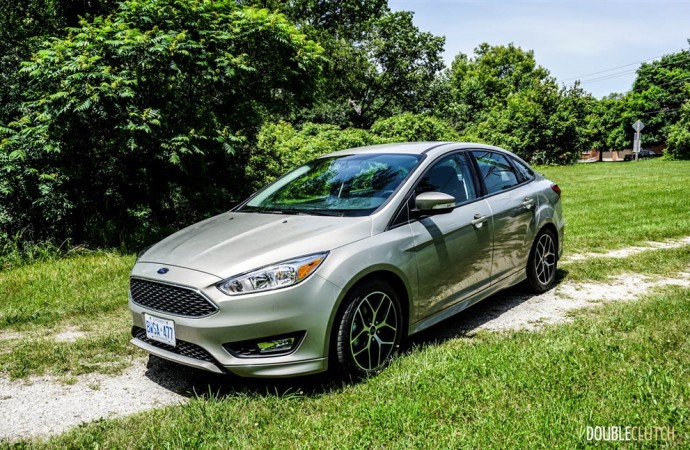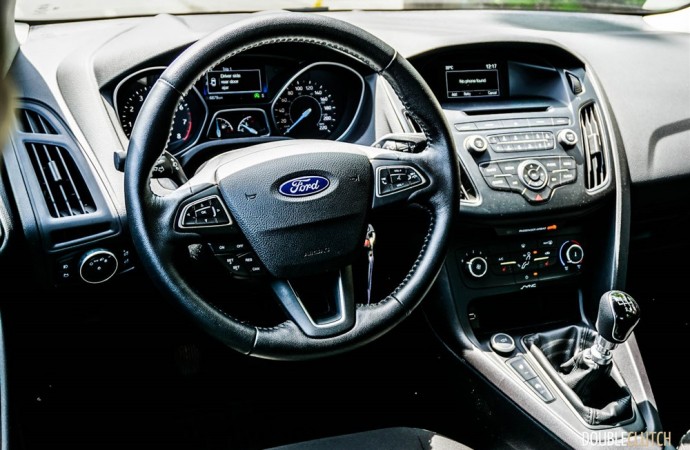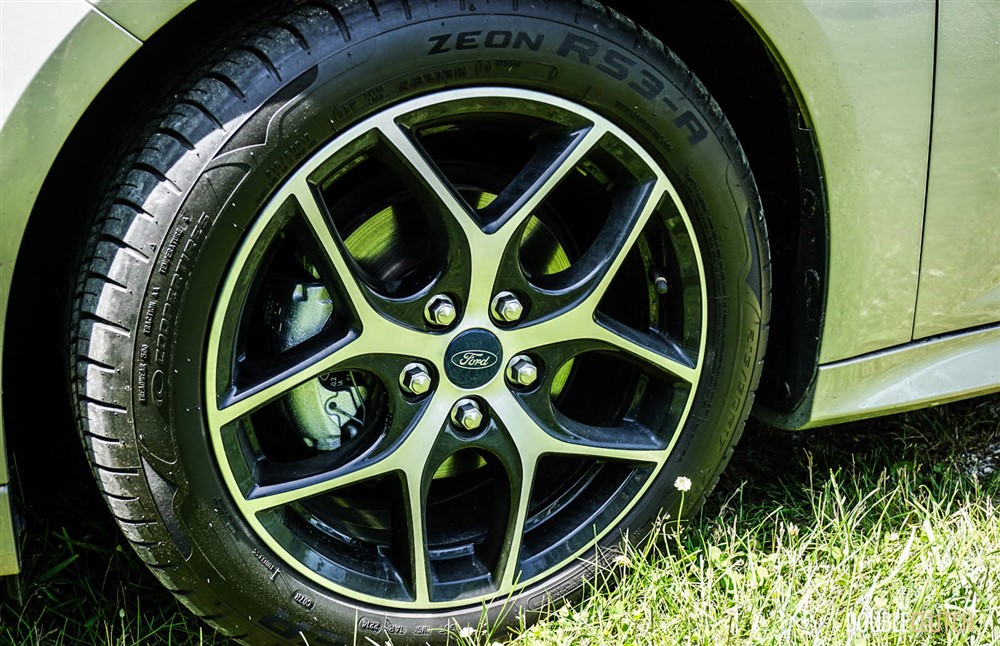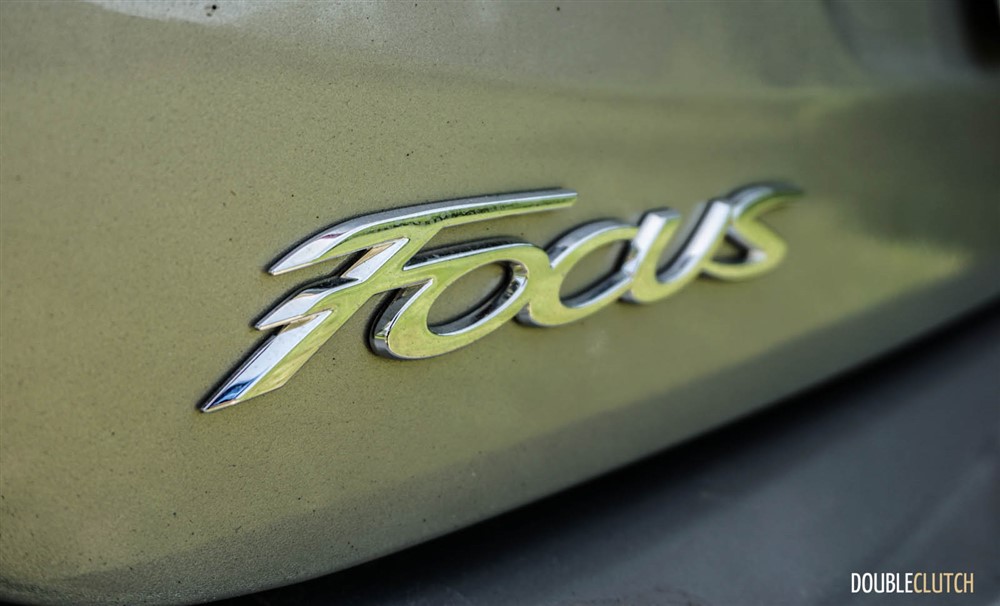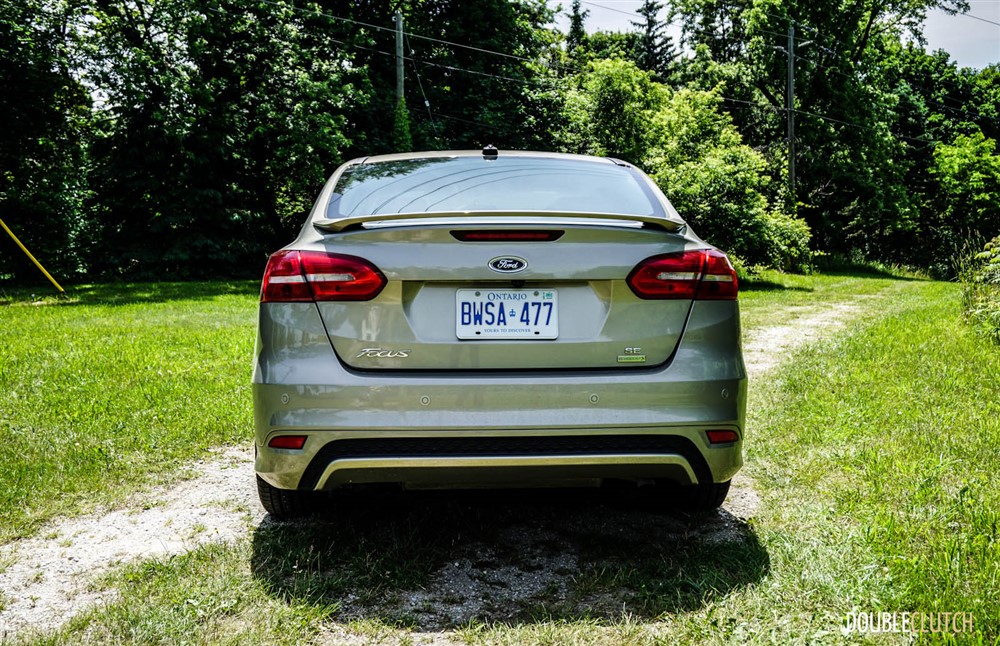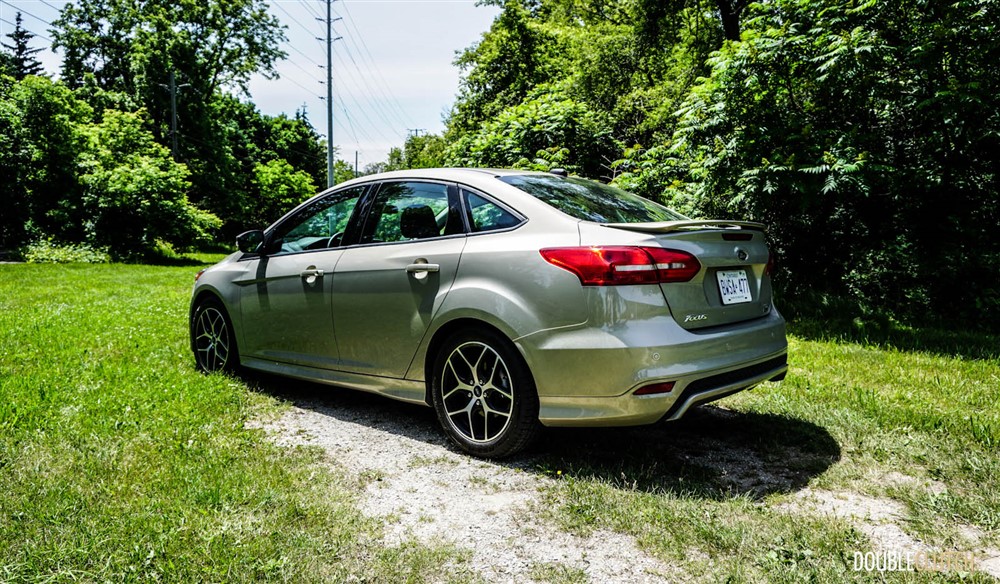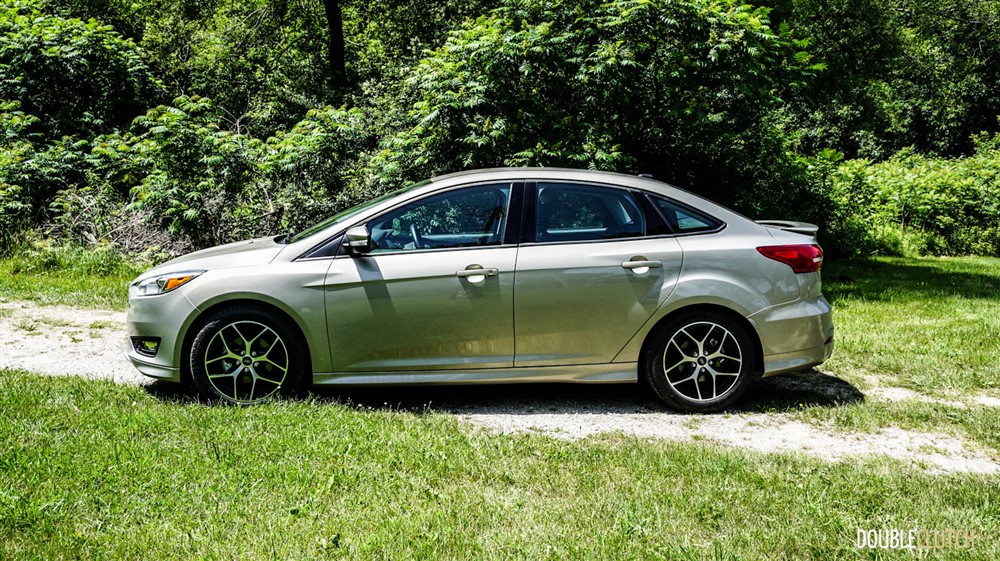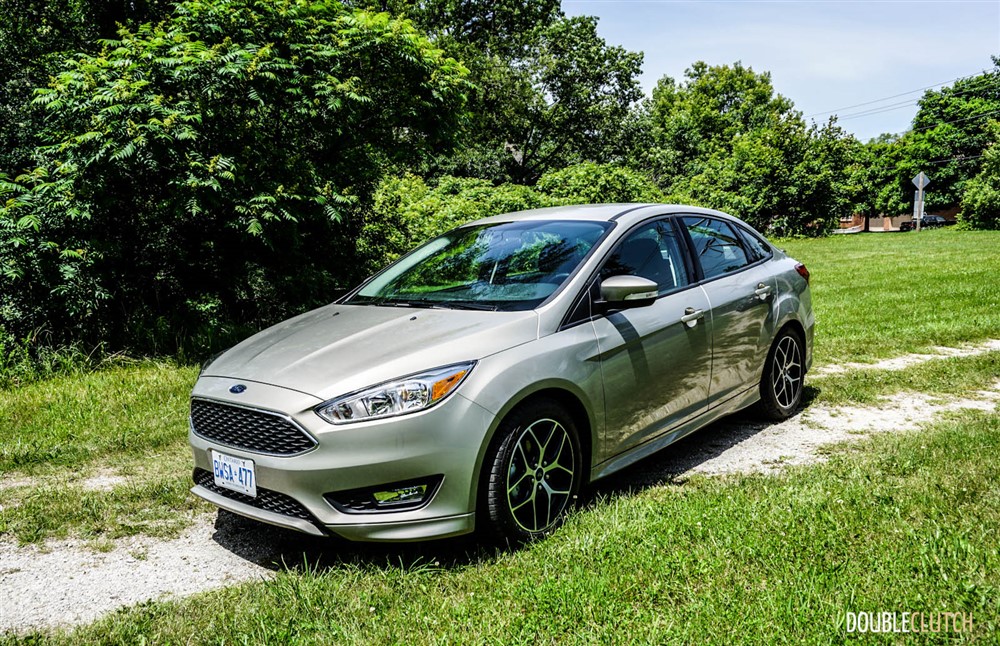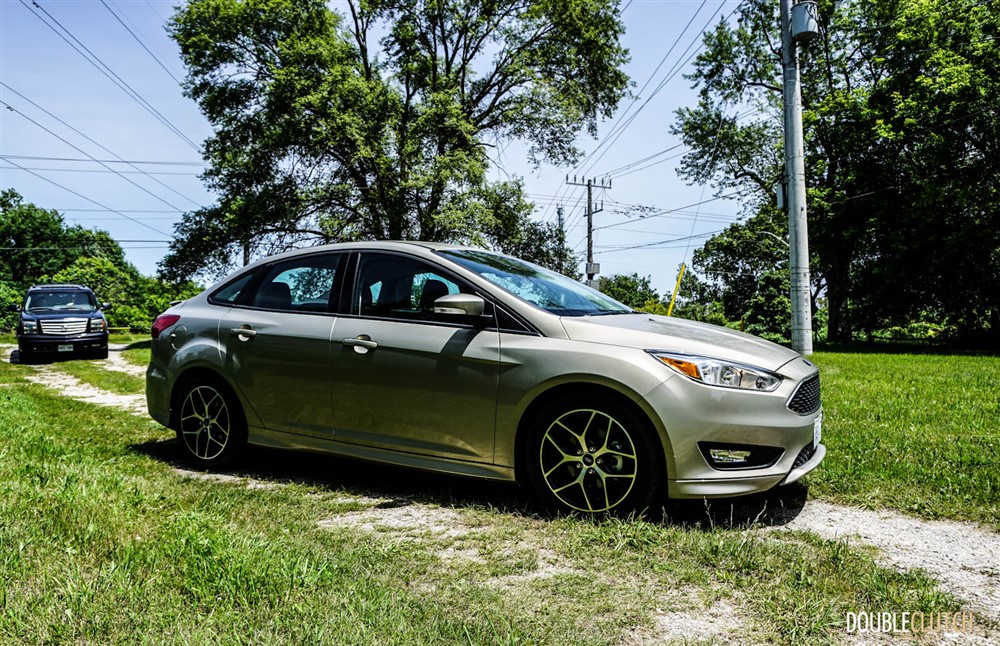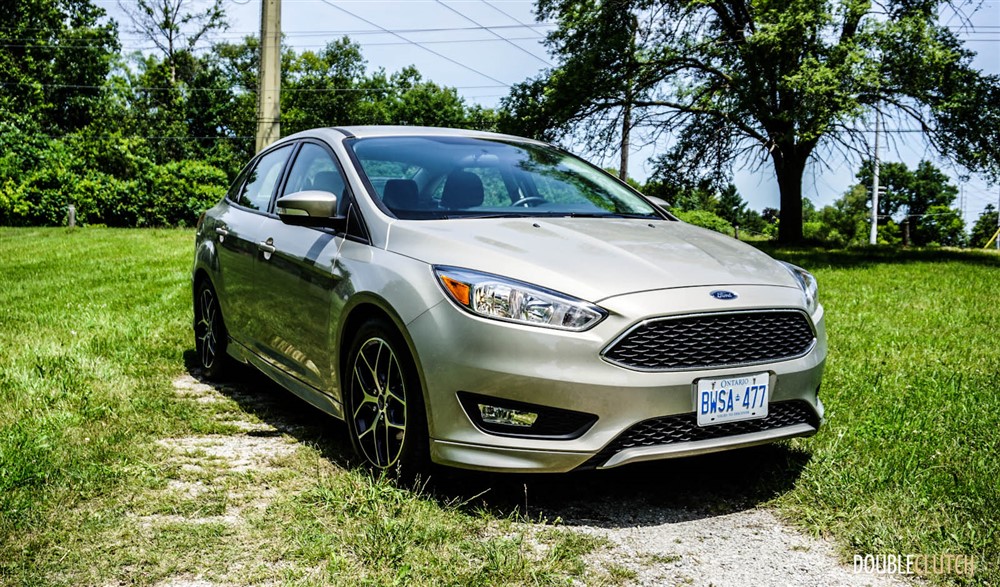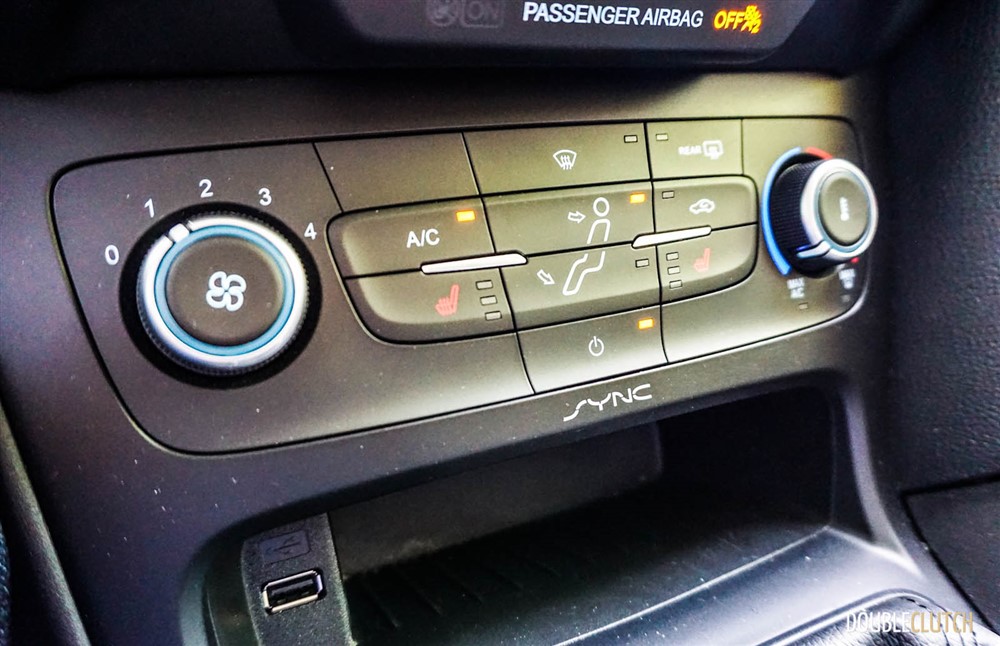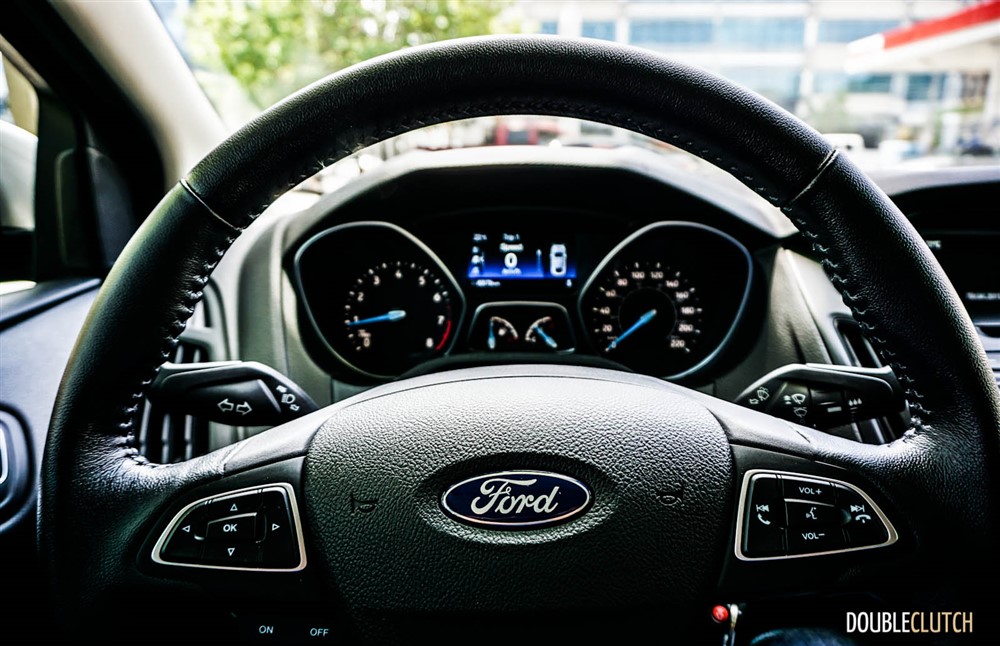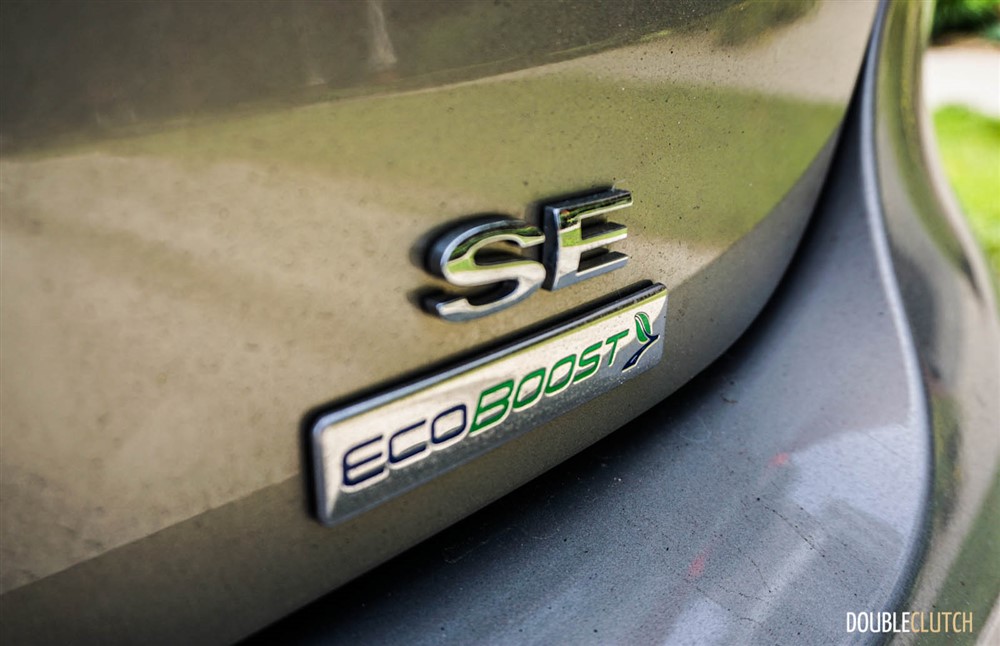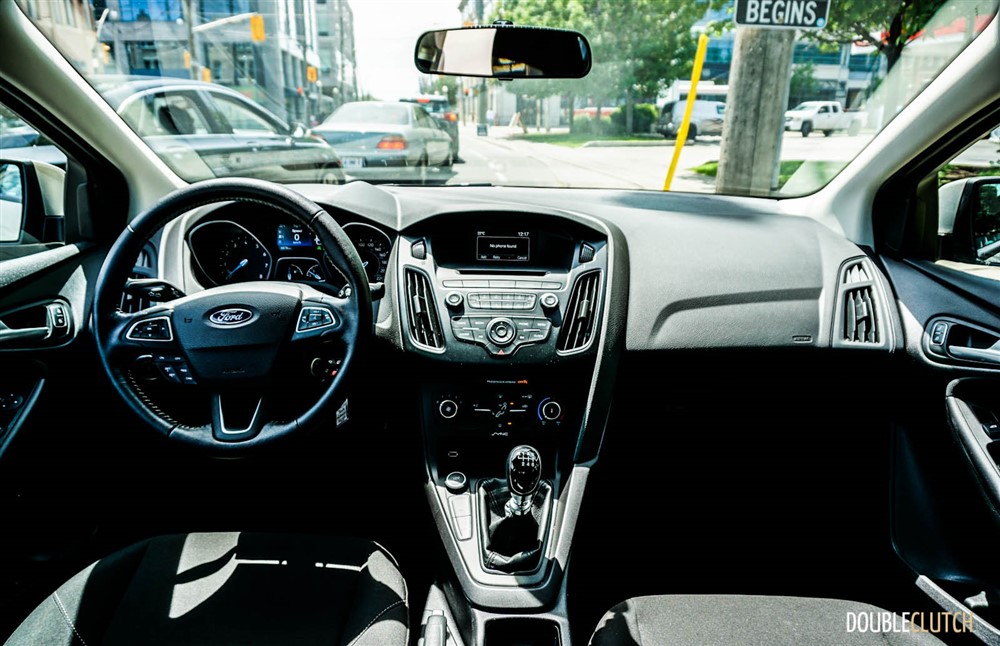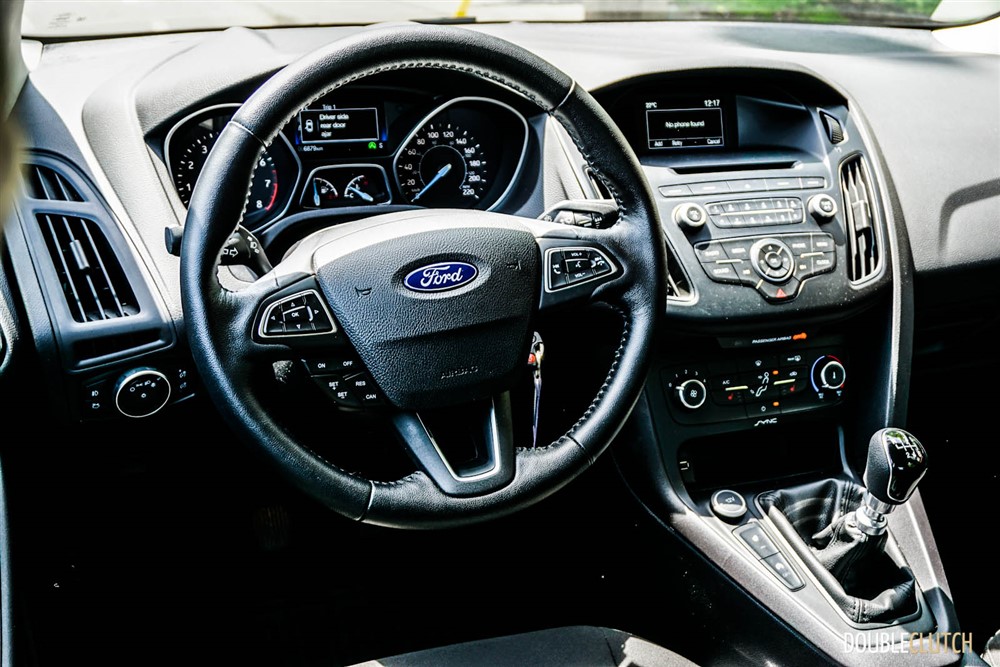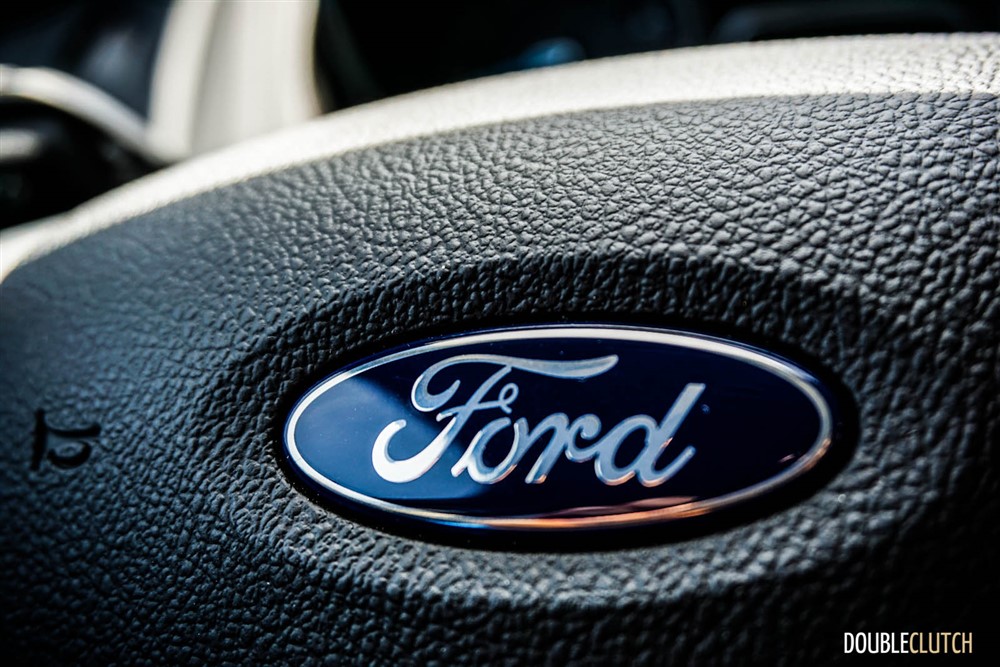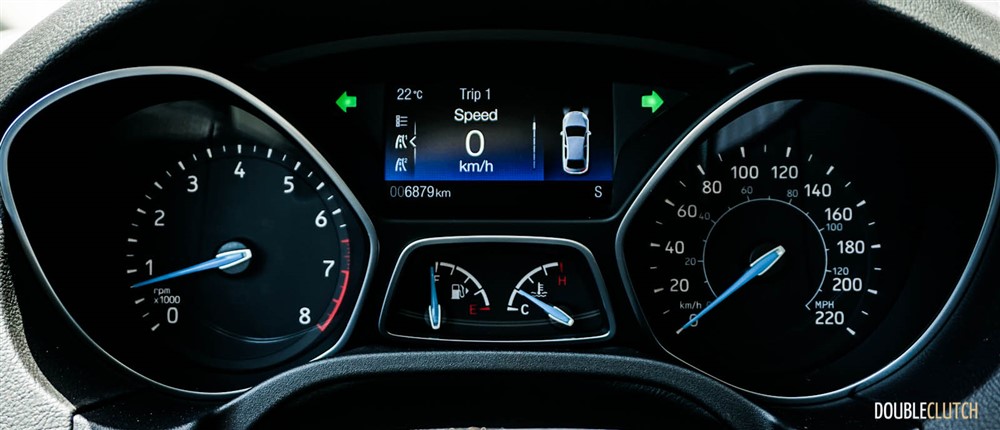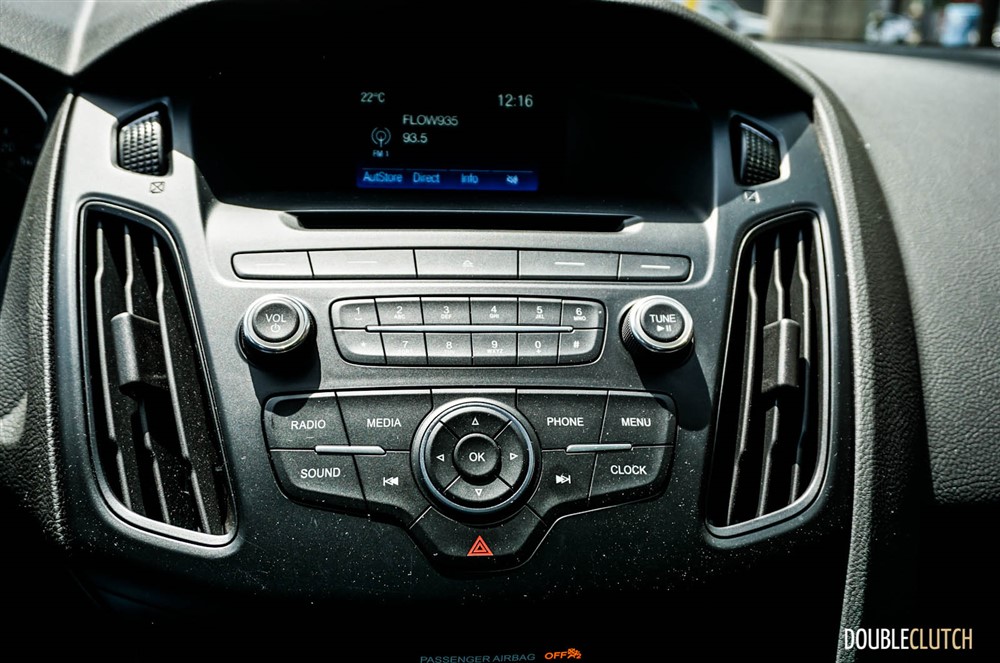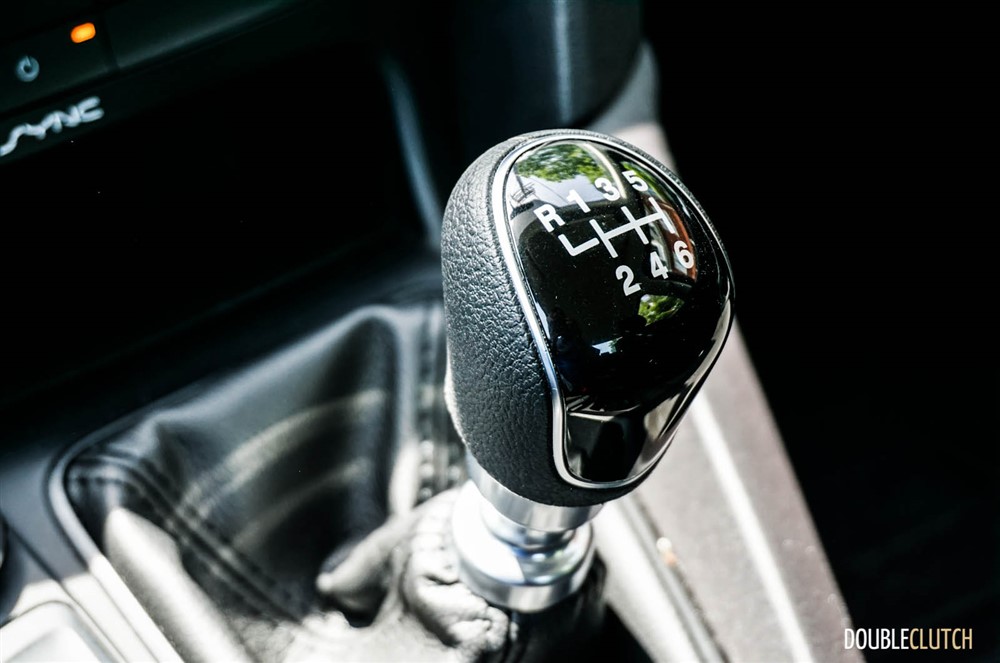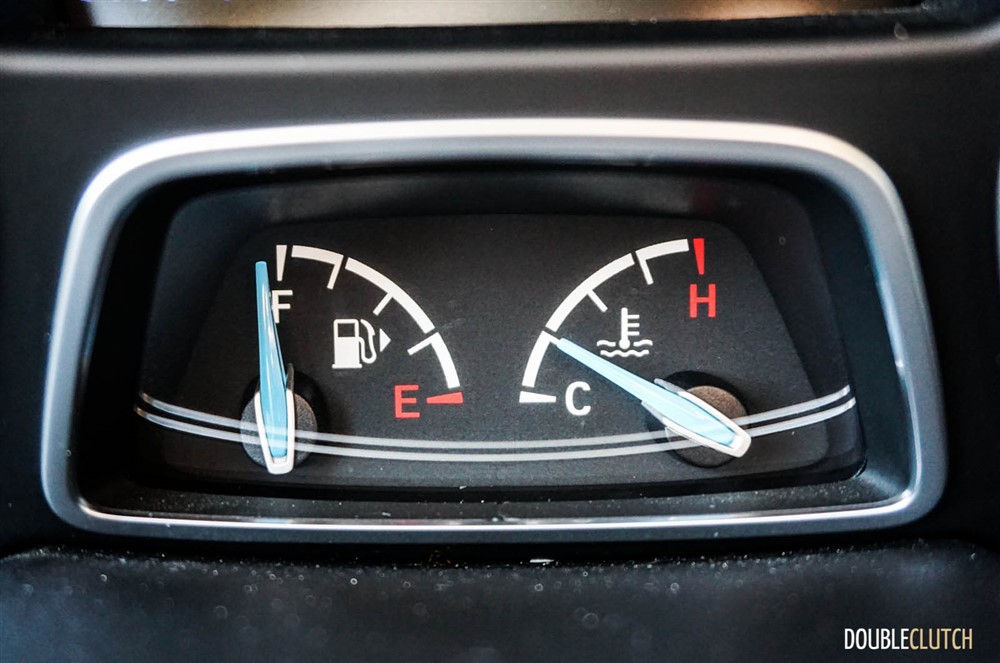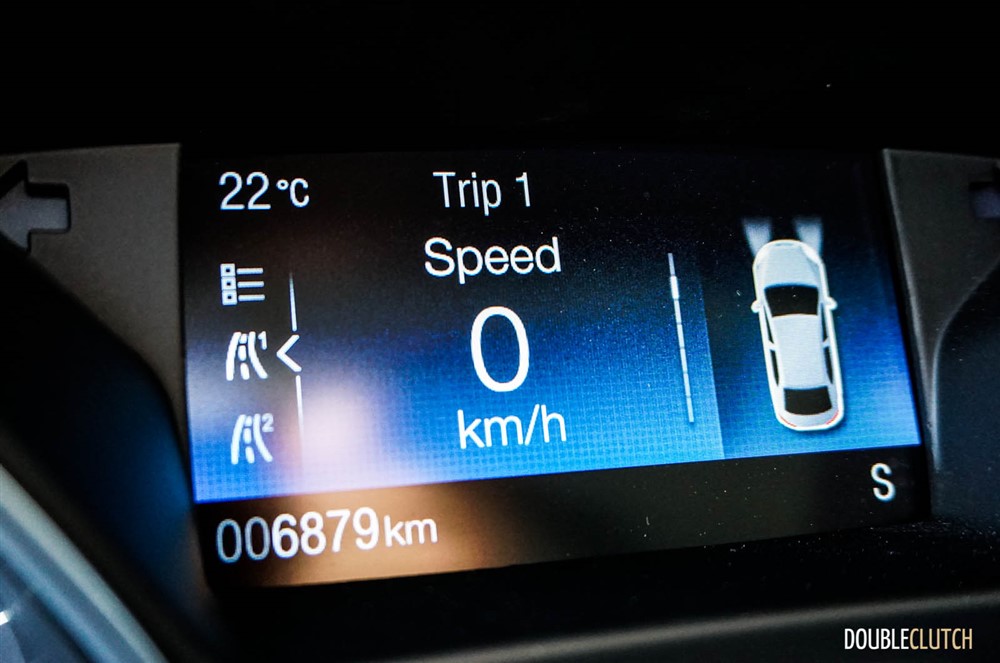A few months ago, oil prices dropped, and as a result, fuel prices dropped across Canada to record lows in almost a decade. Of course, this meant the general public began to buy gas guzzlers again and completely disregarded the possibility that this might be a short term gain. Ford has continued their trend towards efficiency throughout their lineup, and this has now carried into their world-famous compact. The 2015 Ford Focus 1.0 is the only three-cylinder compact available in Canada (the Mini Cooper and Mitsubishi Mirage are subcompacts), and we were delighted to spend a week with it in our garage for some proper evaluation.
With a Canadian base price of just $16,799, the Focus is an enticing choice for compact buyers in varying stages of life. Many high school/university/college students opt for the small Ford thanks to its appealing looks and cheeky demeanour, and its quietness and comfort mean it’s a great pick for empty nesters looking to downsize their Taurus Wagons as well. Now available in both sedan and hatchback body styles and offering powertrain choices ranging from the engine-less Focus BEV right up to the hot turbocharged ST model, the Focus really is a jack-of-all-trades.
The most important part of the Focus this year is the introduction of the new 1.0L EcoBoost engine. This three-cylinder block isn’t nearly as slow as it seems, and is capable of delivering 123 horsepower at 6,350rpm and 148 lb-ft of torque at just 2,500rpm. We saw this engine block on display at last year’s North American International Auto Show and were baffled by its (lack of) size – it’s literally capable of fitting in carry-on luggage. Other Focus models are available with the 6-speed PowerShift automatic, but the 1.0L, as in the smaller Fiesta, is only available with the 6-speed manual. Since we’re all enthusiasts here, we appreciate this.
Last year we sampled two different three-cylinder motors, both in the new Mini Cooper as well as the Mitsubishi Mirage. This is like neither of those, and the turbocharger helps give the engine that extra little bit of boost (quite literally) it needs. On the highway, the Focus 1.0 is very smooth and is one of the quietest in the compact segment. Thanks to the sixth gear, the engine doesn’t have to scream at high RPM, and putters along quite smoothly. In the city though, the short gearing will cause the driver to give the little EcoBoost a workout to keep up. It’s not really an issue, but this is a car that I feel excels in the suburbs and even on the highway rather than within the downtown core
Despite the short gearing being a bit of an issue, the clutch is actually quite good. The shifter itself is a little bit notchy and the spacing is tight, so it’s pretty easy to miss shifts; I found myself going from second into fifth instead of third. To help with smoothness, Ford has implemented a system that will hold engine revs between upshifts, thus preventing jerky shifts if the clutch is let out too quickly. This works very well, but I found the rev-hang between first and second gears a bit too intrusive and a bit on the annoying side. The engine does sound especially neat at higher revs or under hard acceleration – three-cylinders sound a lot like the turbocharged inline 5-cylinder in the dearly departed Audi TT RS.
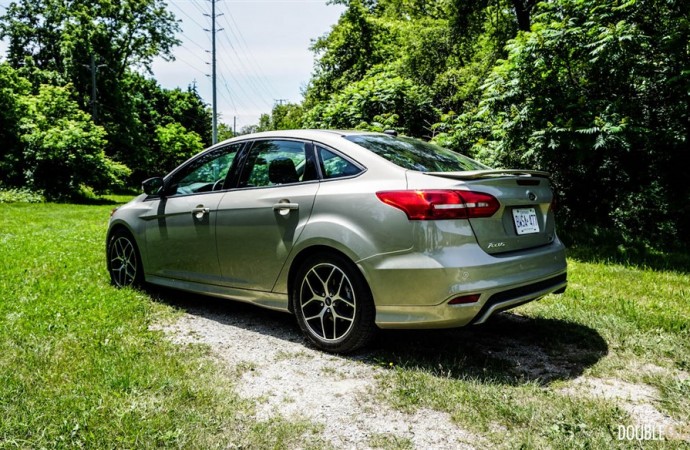
Not only does the Focus 1.0 sound good, it handles a lot better than the typical compact sedan should. The steering response is good and the chassis is spectacular. This is unsurprising considering this is the very same chassis that underpins the hotshot Focus ST, and this pedigree has trickled down into the 1.0 model as well. Ride quality is excellent as well, and the Focus doesn’t dart around at highway speeds like other compacts do. The suspension does a good job at absorbing road imperfections and the car rides smoother than other cars worth triple the Focus’ price
Now, the key aim for this new powertrain is to save the consumer money at the gas station. Let’s do some math here – the regular Focus with the 2.0L engine is capable of 9.3L/100km in the city and 6.7L/100km on the highway. After a long road trip, I was able to bring a 2.0L Focus down to 7L/100km combined. Ford estimates that under typical conditions, the EcoBoost three is capable of 8.1L/100km in the city and 5.9L/100km on the highway. Their estimates worked out to be accurate or even modest, because I averaged about 5.7L/100km on the highway and 6.5L/100km in combined driving. The price premium for this engine is $1600 (which also includes a few extra features), so the savings isn’t instantaneous, but it’s there if the car is kept around for the long haul.
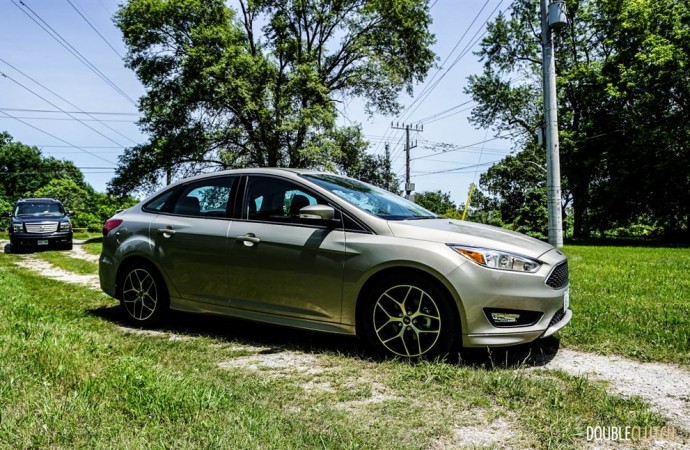
Aesthetically, the Focus is a winner. It sits right up there with the Mazda3 and Hyundai Elantra as the best styled compact in today’s market. It has contemporary lines that aren’t only inoffensive; they’re aggressive and sporty. The unique ground effects on the EcoBoost model set the rest of the car off nicely. The interior is just as well appointed. This particular car had some fabric seats that don’t exactly look upscale, but are decently comfortable to spend extended periods in. Interior materials are decent for the price, and there are no visible panel gaps that really stand out
Adding onto the base price for the 2015 Focus SE sedan, the SE EcoBoost package ($1600) adds the three-cylinder motor, 17” machined aluminum wheels, fog lights, rear disc brakes, unique body styling cues, a rear valence and diffuser, a leather-wrapped steering wheel, and a rear spoiler. Canadians will also be happy to note that this model comes with an engine block heater. Our car was also equipped with a $700 Winter package that Ford aims straight at the Canadian market, and adds heated front seats, steering wheel, mirrors, and all-weather floor mats. A reverse sensing system with camera is $350, and a stainless steel scuff plate is an extra $150. In typical Ford fashion, the options are all well-packaged and available for a reasonable price.
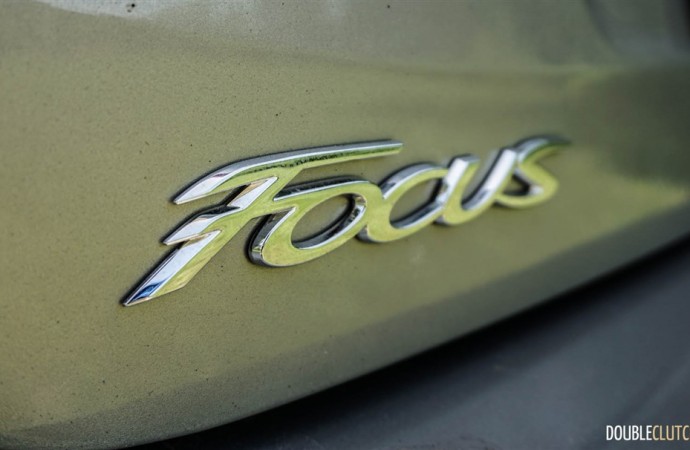
Ford’s MyFordTouch infotainment system has gone from being a mess full of glitches to one of the most simplistic units in the industry. That system is an option on higher trim level Foci, while the other models such as the one tested here make do with the SYNC system. It’s decent enough to use and features both USB and Bluetooth connectivity, but is on the slower side and clunky in operation. While listening to tracks, I noticed a slight lag every time I tried to browse through menus within the system. There’s no touchscreen here, so inputs must be made using the large buttons that aren’t marked all that clearly and can be confusing. The display however is very nice to look at and is clearly visible even in direct sunlight.
Our test car came in at just under $24,000 before taxes. Considering a similarly equipped Mazda3 GS with the SKYACTIV technology can be had for a little bit less, there certainly is a good price premium to pay for this three-cylinder conversation piece. We did determine though that this conversation piece does make sense from a financial standpoint if fuel economy is a huge priority and the buyer intends to keep the car for more than just the typical lease period. The 2015 Ford Focus remains a fantastic model lineup that has something to offer for almost every type of consumer.

